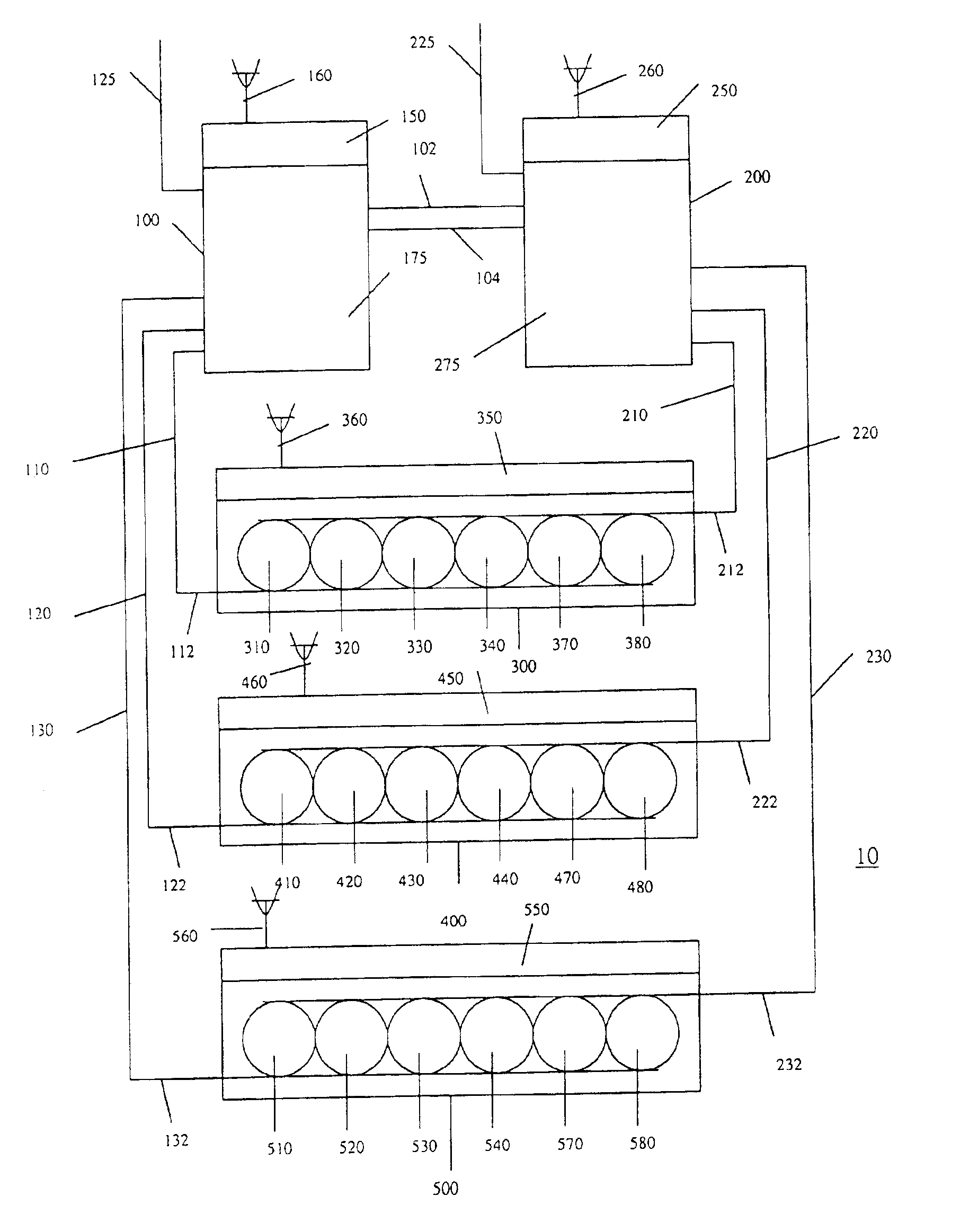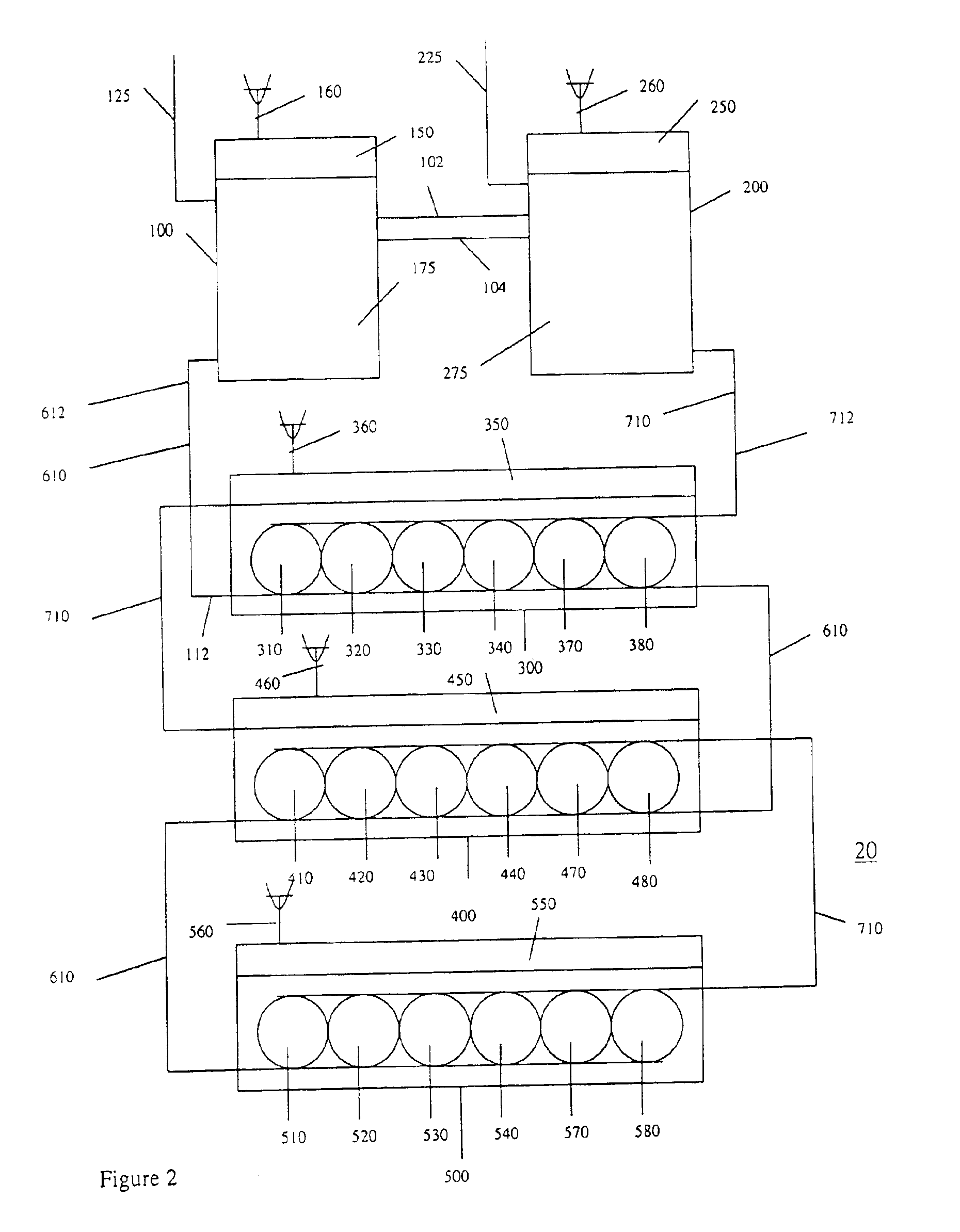Raid system with multiple controllers and proof against any single point of failure
a technology of raid system and controller, applied in the field of modular enclosure, can solve problems such as failure of raid system, failure of backplane or cable, and failure of raid system
- Summary
- Abstract
- Description
- Claims
- Application Information
AI Technical Summary
Benefits of technology
Problems solved by technology
Method used
Image
Examples
Embodiment Construction
FIG. 1 is a schematic of the external view of a preferred RAID system of this invention 10. This RAID system comprises two storage array controllers 175 and 275, and three racks of DASD or storage units 310-380, 410-480, and 510-580. A host computer is electrically connected to the storage array controllers 175 and 275 by connectors 125 and 225, respectively.
Any suitable connector may be used, such as a wire, copper wire, cable, optical fiber, or a SCSI bus.
In all of the Figures the convention is followed of depicting connectors which are not electrically connected as lines which cross perpendicularly. An electrical connection is indicated by a line which terminates perpendicularly at another line or at a symbol for a component. Thus in FIG. 1 a host computer (not shown in FIG. 1) is electrically connected to storage array controller 175 by connector 125. The host computer is not considered part of the RAID system and is not shown in FIG. 1.
DASD may be disks, tapes, CDS, or other su...
PUM
 Login to View More
Login to View More Abstract
Description
Claims
Application Information
 Login to View More
Login to View More - R&D
- Intellectual Property
- Life Sciences
- Materials
- Tech Scout
- Unparalleled Data Quality
- Higher Quality Content
- 60% Fewer Hallucinations
Browse by: Latest US Patents, China's latest patents, Technical Efficacy Thesaurus, Application Domain, Technology Topic, Popular Technical Reports.
© 2025 PatSnap. All rights reserved.Legal|Privacy policy|Modern Slavery Act Transparency Statement|Sitemap|About US| Contact US: help@patsnap.com



